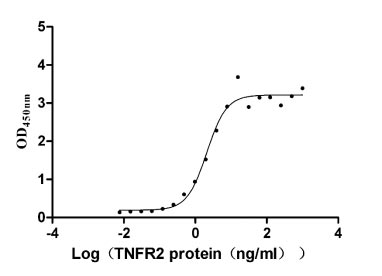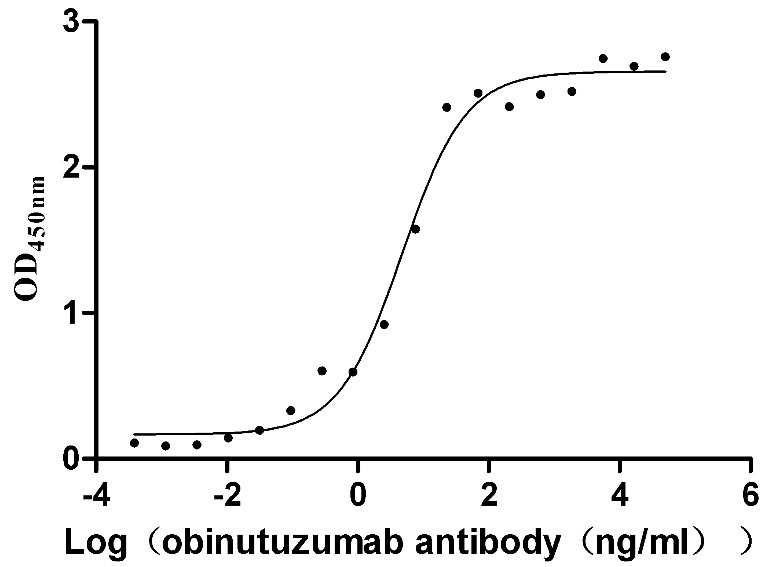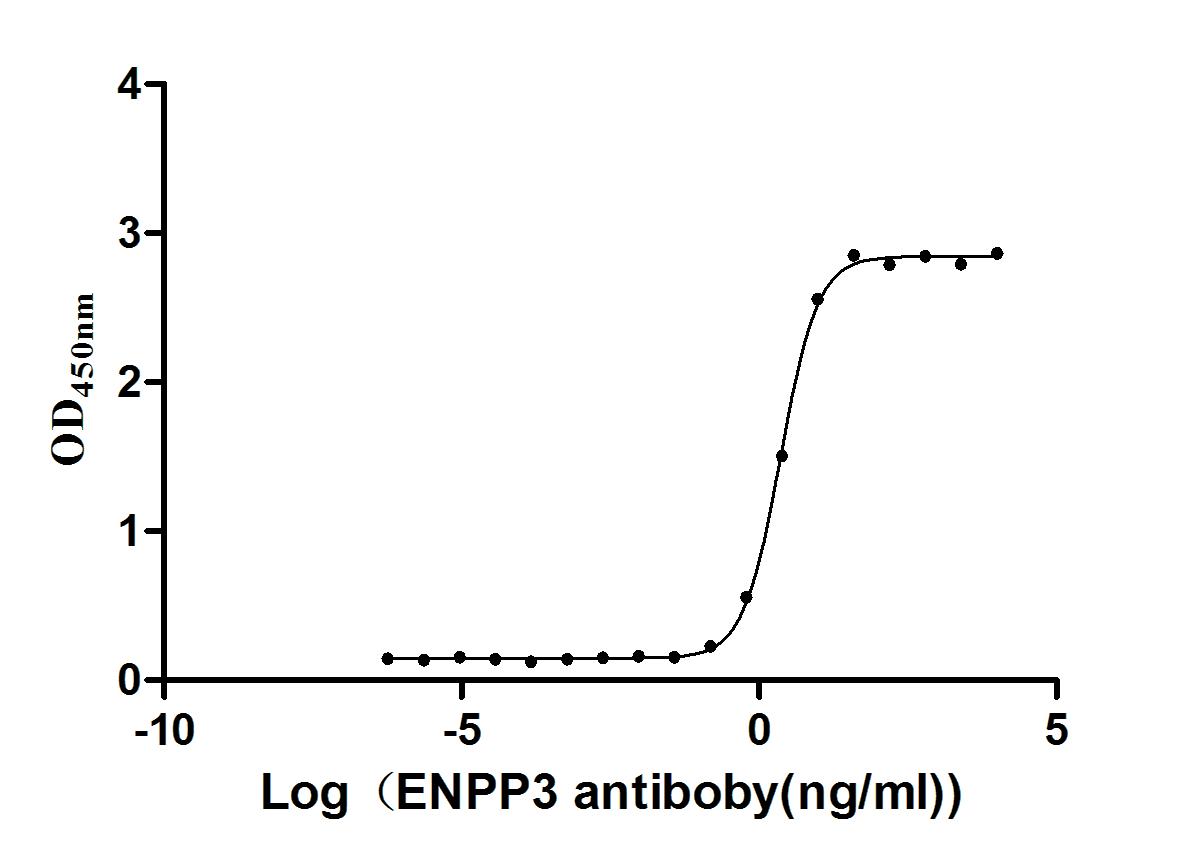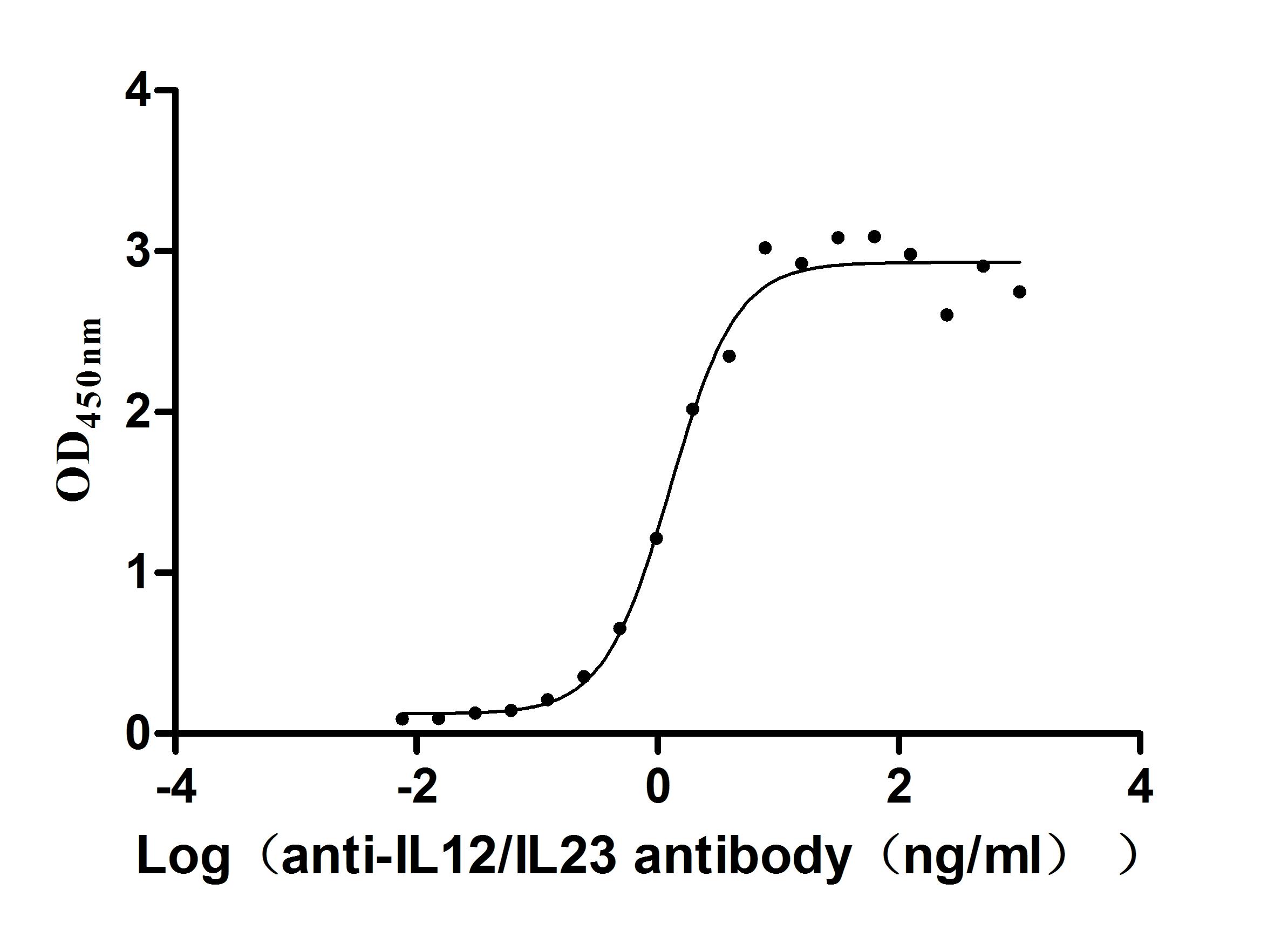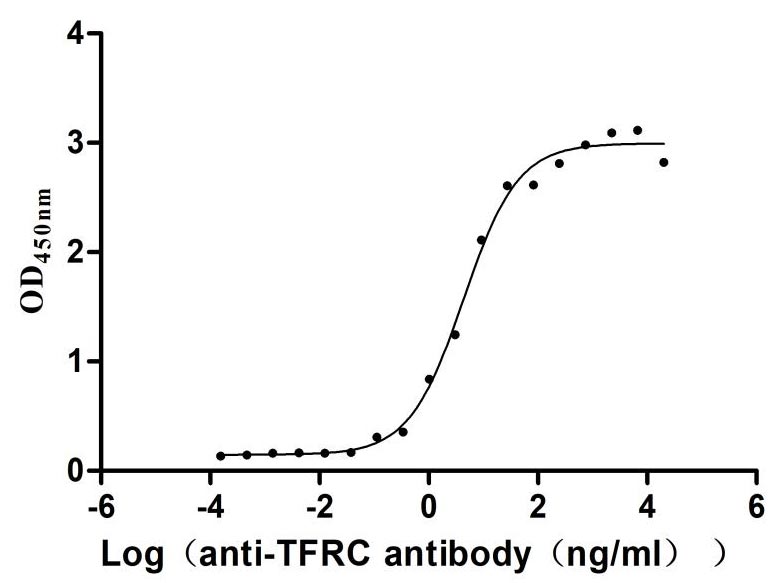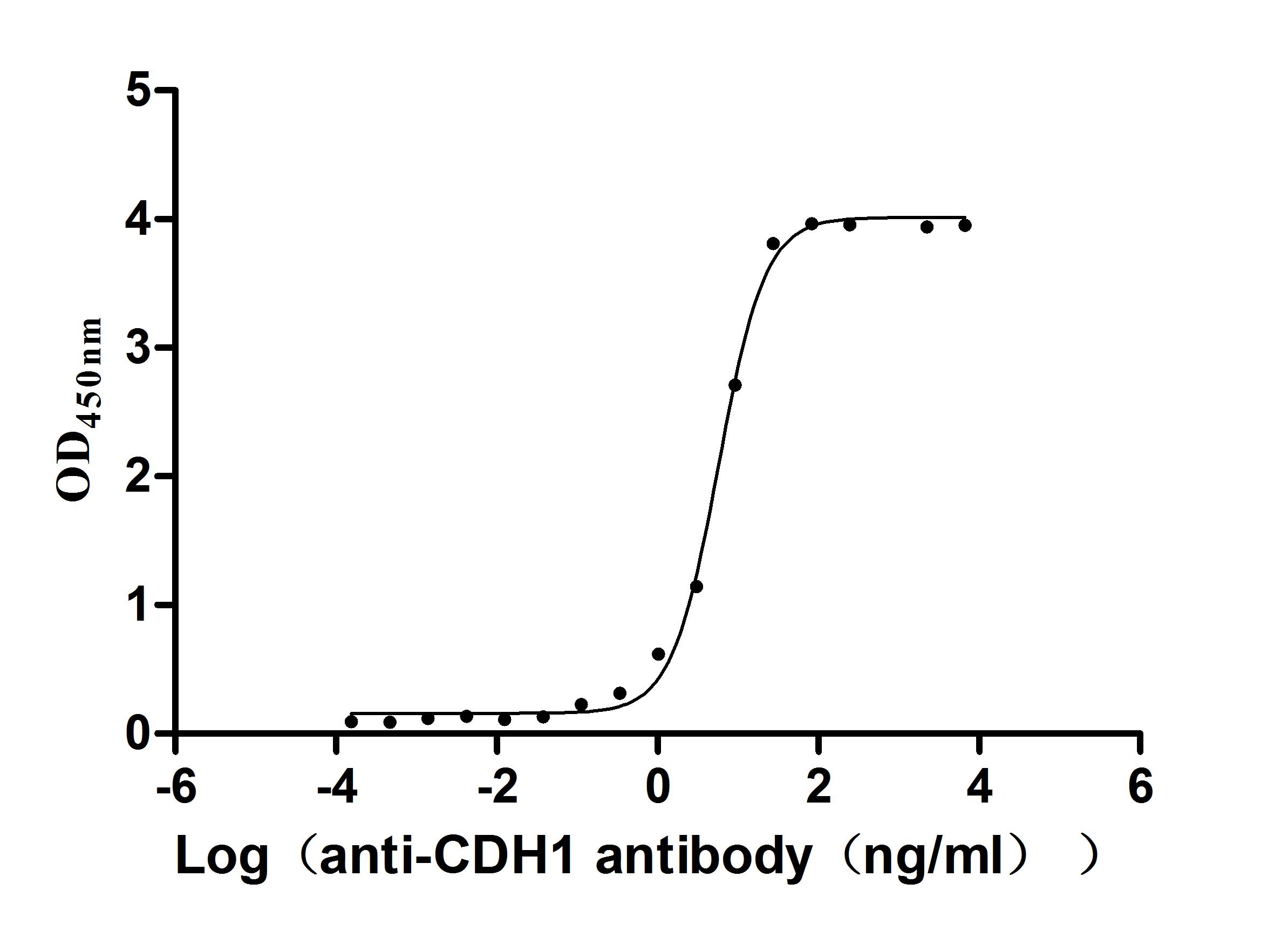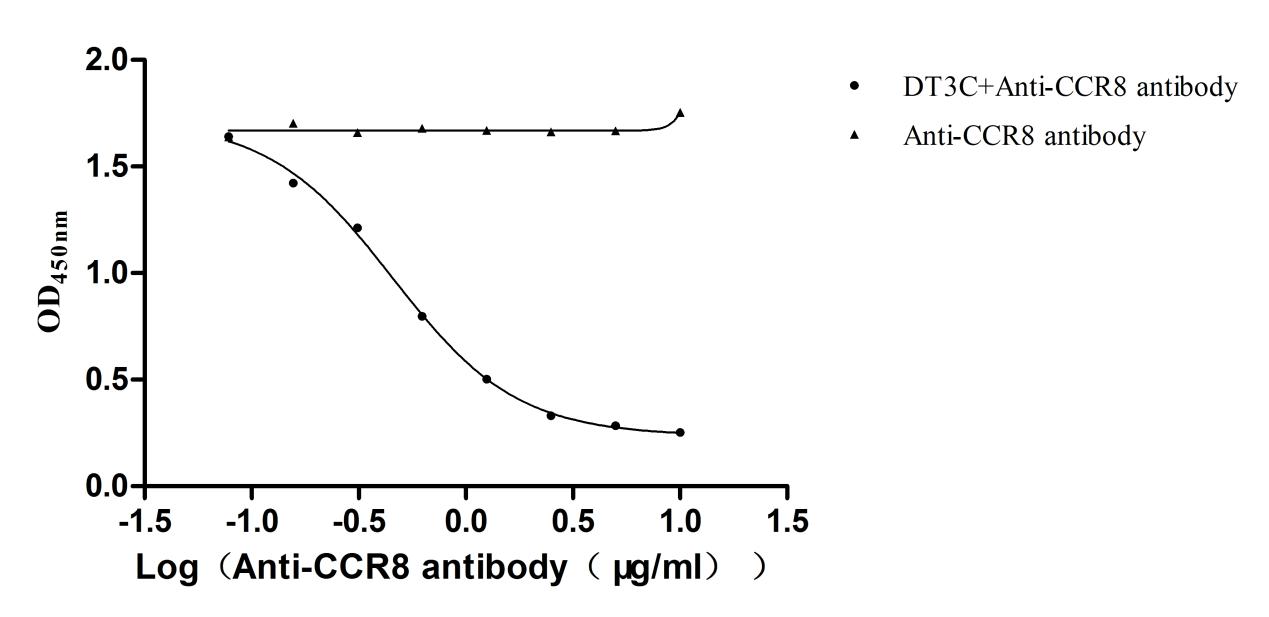Recombinant Human 1-phosphatidylinositol 4,5-bisphosphate phosphodiesterase beta-3 (PLCB3)
-
中文名稱:
-
貨號:CSB-YP018128HU
-
規(guī)格:
-
來源:Yeast
-
其他:
-
中文名稱:
-
貨號:CSB-EP018128HU
-
規(guī)格:
-
來源:E.coli
-
其他:
-
中文名稱:
-
貨號:CSB-EP018128HU-B
-
規(guī)格:
-
來源:E.coli
-
共軛:Avi-tag Biotinylated
E. coli biotin ligase (BirA) is highly specific in covalently attaching biotin to the 15 amino acid AviTag peptide. This recombinant protein was biotinylated in vivo by AviTag-BirA technology, which method is BriA catalyzes amide linkage between the biotin and the specific lysine of the AviTag.
-
其他:
-
中文名稱:
-
貨號:CSB-BP018128HU
-
規(guī)格:
-
來源:Baculovirus
-
其他:
-
中文名稱:
-
貨號:CSB-MP018128HU
-
規(guī)格:
-
來源:Mammalian cell
-
其他:
產(chǎn)品詳情
-
純度:>85% (SDS-PAGE)
-
基因名:
-
Uniprot No.:
-
別名:1-phosphatidylinositol 4,5-bisphosphate phosphodiesterase beta-3; EC 3.1.4.11; Phosphoinositide phospholipase C-beta-3; Phospholipase C-beta-3; PLC-beta-3; PLCB3
-
種屬:Homo sapiens (Human)
-
蛋白標簽:Tag?type?will?be?determined?during?the?manufacturing?process.
The tag type will be determined during production process. If you have specified tag type, please tell us and we will develop the specified tag preferentially. -
產(chǎn)品提供形式:Liquid or Lyophilized powder
Note: We will preferentially ship the format that we have in stock, however, if you have any special requirement for the format, please remark your requirement when placing the order, we will prepare according to your demand. -
復溶:We recommend that this vial be briefly centrifuged prior to opening to bring the contents to the bottom. Please reconstitute protein in deionized sterile water to a concentration of 0.1-1.0 mg/mL.We recommend to add 5-50% of glycerol (final concentration) and aliquot for long-term storage at -20℃/-80℃. Our default final concentration of glycerol is 50%. Customers could use it as reference.
-
儲存條件:Store at -20°C/-80°C upon receipt, aliquoting is necessary for mutiple use. Avoid repeated freeze-thaw cycles.
-
保質(zhì)期:The shelf life is related to many factors, storage state, buffer ingredients, storage temperature and the stability of the protein itself.
Generally, the shelf life of liquid form is 6 months at -20°C/-80°C. The shelf life of lyophilized form is 12 months at -20°C/-80°C. -
貨期:Delivery time may differ from different purchasing way or location, please kindly consult your local distributors for specific delivery time.Note: All of our proteins are default shipped with normal blue ice packs, if you request to ship with dry ice, please communicate with us in advance and extra fees will be charged.
-
注意事項:Repeated freezing and thawing is not recommended. Store working aliquots at 4°C for up to one week.
-
Datasheet :Please contact us to get it.
相關產(chǎn)品
靶點詳情
-
功能:The production of the second messenger molecules diacylglycerol (DAG) and inositol 1,4,5-trisphosphate (IP3) is mediated by activated phosphatidylinositol-specific phospholipase C enzymes.
-
基因功能參考文獻:
- Data suggest that 300-residue C-terminal domain of PLCB3 promotes adsorption to phospholipid monolayer/membrane bilayer and is required for spatial organization/adsorption of PLCB3 on membrane surface; defects in phosphatidylinositol 4,5-bisphosphate (PIP2) hydrolysis alter monolayer adsorption, thus, suggesting role of active site in this process; PLCB3 is preferentially adsorbed to region of bilayer enriched with PIP2. PMID: 28945350
- These results indicate that the mechanism by which Galphaq and PLC-beta3 mutually regulate each other is far more complex than a simple, two-state allosteric model and instead is probably kinetically determined. PMID: 28842497
- We propose that unliganded PLC-beta exists in equilibrium between a closed conformation observed in crystal structures and an open conformation where the PH domain moves away from the EF hands. Therefore, intrinsic movement of the PH domain in PLC-beta modulates Gbetagamma access to its binding site. PMID: 27002154
- the MCP1-induced cortactin phosphorylation is dependent on PLCb3-mediated PKC activation, and siRNA-mediated down-regulation of either of these molecules prevents cortactin interaction with WAVE2 PMID: 26490115
- membranes are integral for the activation of PLC-beta isozymes by diverse modulators. PMID: 25193662
- the M3 muscarinic receptor maximizes the efficiency of PLCbeta3 signaling beyond its canonical role as a guanine nucleotide exchange factor for Galpha. PMID: 24596086
- This study provides an understanding of the structural basis for the PDZ-mediated NHERF1-PLCbeta3 interaction that could prove valuable in selective drug design against CXCR2-related cancers. PMID: 24642259
- PLCbeta3 is enriched in the cytosol. PMID: 23006664
- phospholipase C-beta3 structure reveals the role of the its distal C-terminal domain PMID: 23377541
- Stromal cell-derived factor-1 signaling via the CXCR4-TCR heterodimer uses PLC-beta3 to activate the Ras-ERK pathway and increase intracellular calcium ion concentrations PMID: 21705626
- Data demonstrate that PLCB3, by regulating intracellular calcium transients, plays a relevant role in amplifying the expression and release of IL-8, the major chemokine recruiting neutrophils in CF airway lungs. PMID: 21411730
- Activation of hPLCbeta3 by U73122 required covalent modification of cysteines as evidenced by the observation that enzyme activation was attenuated by thiol-containing nucleophiles, l-cysteine and glutathione. PMID: 21266572
- Studies indicate that the complex between the effector protein phospholipase C-beta3 (PLC-beta3) and its activator, Galpha(q), suggests that several effectors independently evolved a structurally similar helix-turn-helix segment for G protein recognition. PMID: 21304157
- study describe the structure of PLC-beta3 in an activated complex with Galphaq, which together with supporting biochemical and physiological analyses reveals its mechanism of transmembrane signaling PMID: 20966218
- PLC beta 3 and PLC beta 1 bind to calmodulin PMID: 12821674
- findings demonstrated that G-protein-activated phospholipase C-beta interacts with cell polarity proteins Par3 and Par6 to form protein complexes and to mediate downstream signal transduction PMID: 15782111
- reduced Ca(2+) signaling in high glucose cannot be explained by reduced Ca(2+) stores but is due to conventional PKC-dependent phosphorylation and inactivation of PLC-beta(3) PMID: 15998840
- Homodimerization of PLC-beta3 and PLC-beta1 isoenzymes was observed but heterodimerization of these isoenzymes was not detected. PMID: 16763092
- Fission of transport carriers at the trans-Golgi network is dependent on specifically PLCbeta3, which is necessary to activate PKCeta and PKD in that Golgi compartment, via diacylglycerol production. PMID: 17492941
- both negative crosstalk from the cAMP/PRKA pathway and a negative feedback loop in the oxytocin/G protein/PLCB pathway involving PRKC operate in myometrial cells PMID: 18322273
- PLCbeta3 may provide a selective target for inhibiting Ca(2+) responses to mediators of inflammation, including C5a, UDP, PAF, and LPA PMID: 18411281
- VEGF, specifically through VEGFR2, induces phosphorylation of two serine residues on PLCbeta3. PMID: 19295129
顯示更多
收起更多
-
亞細胞定位:Cytoplasm. Membrane. Nucleus.
-
數(shù)據(jù)庫鏈接:
Most popular with customers
-
Recombinant Human Lymphotoxin-alpha (LTA) (Active)
Express system: Mammalian cell
Species: Homo sapiens (Human)
-
Recombinant Human B-lymphocyte antigen CD20 (MS4A1)-VLPs (Active)
Express system: Mammalian cell
Species: Homo sapiens (Human)
-
Express system: Mammalian cell
Species: Homo sapiens (Human)
-
Recombinant Human IL12B&IL12A Heterodimer Protein (Active)
Express system: Mammalian cell
Species: Homo sapiens (Human)
-
Recombinant Human Transferrin receptor protein 1 (TFRC), partial (Active)
Express system: Mammalian cell
Species: Homo sapiens (Human)
-
Recombinant Human Cadherin-1(CDH1),partial (Active)
Express system: Mammalian cell
Species: Homo sapiens (Human)
-
Recombinant DT3C (Diphtheria toxin & spg 3C domain) for Antibody Internalization Assay (Active)
Express system: E.coli
Species: N/A


